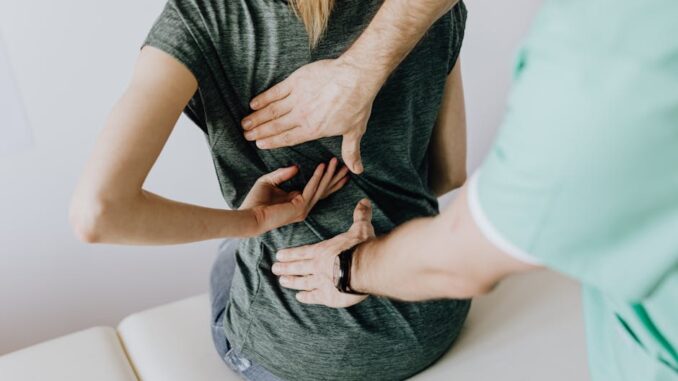
Managing chronic pain during recovery from opioid addiction requires a multifaceted approach that prioritizes safety and efficacy. Relying on opioids can jeopardize sobriety and increase the risk of relapse. Therefore, exploring non-opioid alternatives is essential for maintaining recovery and enhancing quality of life.
Non-Opioid Pharmacologic Therapies
Several medications can effectively manage pain without the addictive potential of opioids:
-
Nonsteroidal Anti-Inflammatory Drugs (NSAIDs): Medications like ibuprofen and naproxen reduce inflammation and alleviate pain. However, prolonged use may lead to gastrointestinal issues, so it’s important to use them under medical supervision.
-
Acetaminophen: Often used for mild to moderate pain, acetaminophen is generally well-tolerated but should be used cautiously to avoid liver damage.
-
Antidepressants and Anticonvulsants: Certain antidepressants (e.g., tricyclics, SNRIs) and anticonvulsants (e.g., gabapentin) are effective for nerve-related pain. They can help manage chronic pain without the risk of addiction associated with opioids. (cdc.gov)
Physical and Behavioral Therapies
Incorporating physical and behavioral therapies can provide significant pain relief:
-
Physical Therapy: A physical therapist can design a personalized exercise program to strengthen muscles, improve flexibility, and reduce pain. Techniques like Transcutaneous Electrical Nerve Stimulation (TENS) use low-voltage electrical currents to disrupt pain signals, offering temporary relief without medications. (eastpointrecoverycenters.com)
-
Cognitive Behavioral Therapy (CBT): CBT helps individuals reframe negative thoughts about pain and develop coping strategies. It addresses the emotional aspect of pain, improving outcomes by teaching patients to manage pain perceptions and reactions. (luminarecovery.com)
-
Mindfulness-Based Stress Reduction: Techniques like meditation and yoga can reduce stress and improve pain tolerance, supporting long-term recovery. Mindfulness practices help individuals focus on the present moment, reducing anxiety and enhancing emotional resilience. (luminarecovery.com)
Integrative and Alternative Therapies
Exploring integrative therapies can offer additional pain relief options:
-
Acupuncture: This traditional Chinese medicine practice involves inserting thin needles into specific points on the body to stimulate energy flow and alleviate pain. Acupuncture has been shown to reduce pain and improve function in individuals with chronic pain conditions. (mcpress.mayoclinic.org)
-
Massage Therapy: Manual manipulation of soft body tissues can treat pain and promote feelings of general well-being. Regular massage can reduce muscle tension and improve circulation, contributing to pain relief. (mcpress.mayoclinic.org)
-
Yoga and Tai Chi: These mind-body practices combine physical postures, breathing exercises, and meditation to improve flexibility, strength, and relaxation. They can help manage pain by promoting overall physical and mental well-being. (mcpress.mayoclinic.org)
Lifestyle Modifications
Adopting healthy lifestyle changes can significantly impact pain levels:
-
Regular Physical Activity: Engaging in low-impact exercises such as swimming, yoga, and walking can improve strength and mobility, reducing pain. Physical activity releases endorphins, natural painkillers that can enhance mood and alleviate discomfort. (luminarecovery.com)
-
Healthy Diet: Consuming an anti-inflammatory diet rich in fruits, vegetables, omega-3 fatty acids, and whole grains can act as a natural pain reliever and reduce inflammation. Proper nutrition supports overall health and can help manage chronic pain. (luminarecovery.com)
-
Stress Management: Techniques such as meditation, deep breathing exercises, and journaling can help manage stress, which often exacerbates pain. Reducing stress levels can lead to a decrease in pain perception and improve quality of life. (luminarecovery.com)
Collaborative Care Approach
Managing chronic pain in recovery is most effective when approached collaboratively:
-
Multidisciplinary Team: A coordinated effort among healthcare professionals—including physicians, nurses, physical therapists, psychologists, and social workers—can address the multifaceted nature of chronic pain. This team-based strategy ensures comprehensive care tailored to individual needs. (stlrecovery.com)
-
Patient Education: Educating patients about the neurobiology and neurophysiology of pain can reduce pain, disability, anxiety, and stress associated with the pain experience. Understanding pain mechanisms empowers individuals to manage their condition effectively. (mn.gov)
By integrating these non-opioid strategies, individuals in recovery can manage chronic pain effectively while minimizing the risk of relapse. It’s essential to work closely with healthcare providers to develop a personalized pain management plan that aligns with recovery goals and promotes overall well-being.
References
-
Centers for Disease Control and Prevention. (n.d.). Non-Opioid Therapies for Pain: A Clinical Reference. Retrieved from (cdc.gov)
-
Mayo Clinic. (n.d.). Opioids aren’t the only effective treatment for pain management. Retrieved from (mcpress.mayoclinic.org)
-
Lumina Recovery. (n.d.). Is Non-Opioid Chronic Pain Management Possible? A Guide for Those in Recovery. Retrieved from (luminarecovery.com)
-
Addiction Treatment for You. (n.d.). Alternative Pain Management. Retrieved from (addictiontreatmentforyou.com)
-
Bluecrest Recovery Center. (n.d.). Understanding and Managing Chronic Pain in Recovery Without Opioids. Retrieved from (bluecrestrc.com)
-
Centers for Disease Control and Prevention. (n.d.). Non-Opioid Therapies for Pain: A Clinical Reference. Retrieved from (cdc.gov)
-
QuickMD. (n.d.). How to Manage Chronic Pain After Opioid Addiction Without Relapsing. Retrieved from (quick.md)
-
Addiction Treatment for You. (n.d.). Alternative Pain Management. Retrieved from (addictiontreatmentforyou.com)
-
Centers for Disease Control and Prevention. (n.d.). Non-Opioid Therapies for Pain: A Clinical Reference. Retrieved from (cdc.gov)
-
Centers for Disease Control and Prevention. (n.d.). Non-Opioid Therapies for Pain: A Clinical Reference. Retrieved from (cdc.gov)


Be the first to comment